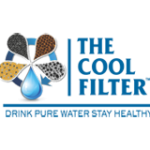
Our health and wellbeing depend on having access to clean and safe water. But frequently dangerous pollutants and toxins can be found in tap water. Systems for purifying water effectively in this situation include water filtration systems. In this article, we’ll examine the science of water filtration and how filters function to get rid of impurities so that the water we drink is safe and wholesome.
- The Basics of Water Filtration: To eliminate pollutants and contaminants, water must be passed through a physical barrier or a chemical medium. There are numerous types of filters available, each using a different technique to clean water, such as UV filters, reverse osmosis systems, and activated carbon filters.
- Activated Carbon Filters: Water filtration systems frequently employ activated carbon filters because of their potency in eradicating undesirable tastes and odours, organic compounds, and toxins from water. These filters are made of porous activated carbon, which has a huge surface area. Through a process known as adsorption, in which the pollutants stick to the carbon surface, impurities are captured in the pores of the carbon. Chlorine, pesticides, herbicides, and volatile organic compounds (VOCs) are all successfully removed from the water through this process.
- Reverse Osmosis (RO) Systems: A semipermeable membrane is used in reverse osmosis, a highly effective filtration technique, to remove a variety of pollutants. Since the membrane’s pores are incredibly small, only water molecules can flow through while bigger particles and dissolved contaminants are blocked. Water is driven through the membrane. Heavy metals, salts, germs, viruses, and other hazardous elements can all be removed by RO systems, leaving the water incredibly pure.
- Ultraviolet (UV) Filters: By inactivating or eradicating the DNA of microorganisms like bacteria, viruses, and parasites, UV filters employ ultraviolet light to disinfect water. UV rays are present in a chamber where water is flowing. These rays cause the microbes’ biological processes to malfunction, rendering them harmless. UV filters are particularly good at eliminating viruses and bacteria, making sure that the water is clear of dangerous pathogens.
- Other Filtration Techniques: Other filtration procedures are used in particular situations in addition to the ones mentioned above. These include ion exchange filters, which remove heavy metals like lead and mercury by exchanging them with less dangerous ions, and ceramic filters, which remove bacteria and silt by trapping them in tiny pores. Another method is distillation, which entails heating water to produce steam and condensing it to remove contaminants.
Water filtration is an essential procedure that makes sure pollutants and contaminants are eliminated, giving us clean, safe water to drink. We can better understand the efficacy of various filtration techniques if we are aware of the science underpinning water filtration. Every technique, including reverse osmosis systems, UV filters, and activated carbon filters, is essential in making our water pure and fit for human consumption. We may have piece of mind knowing that the water we drink is free of harmful contaminants by investing in dependable water filtration systems, protecting our health and wellbeing.






Leave A Comment